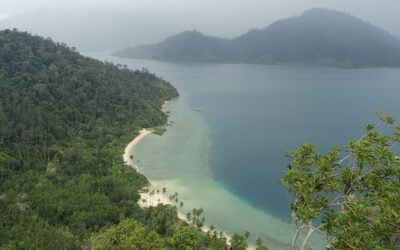
Battery storage in homes and at businesses contributed to helping the CAISO grid in California afloat during recent difficulties.
It was widely reported by Energy-Storage.news and elsewhere that during an energy supply crunch caused by record heatwaves in the western US, batteries came to the aid of CAISO’s grid – which serves more than 80% of customers in the world’s fifth largest economy.
Enjoy 12 months of exclusive analysis
- Regular insight and analysis of the industry’s biggest developments
- In-depth interviews with the industry’s leading figures
- Annual digital subscription to the PV Tech Power journal
- Discounts on Solar Media’s portfolio of events, in-person and virtual
CAISO issued ‘Flex Alerts’, asking for Californians to limit their energy usage, while the grid operator was able to call on resources including demand response and batteries in its service area to narrow the gap between supply and demand.
At some points, more than 3GW of power was discharging into the network from batteries, and the role of grid-scale energy storage was lauded.
However, as alluded to in our report on Thursday, it wasn’t just large-scale utility batteries. Home energy storage systems from residential solar and storage provider Sunrun and from Tesla, networked into virtual power plants (VPPs) for California investor-owned utilities (IOUs), also responded to the Flex Alerts.
Sunrun said that 80MW of stored power from its customers – most of whom also have solar PV on their rooftops – was dispatched to the grid during the late afternoon to evening peak period (broadly from 4pm to 9pm, with 7pm to 9pm the most acute).
The California Solar and Storage Association (CALSSA) trade group said that there were more than 81,464 customer-sited battery systems connected to the grid during the early September heatwave. CALSSA made this assessment based on a review of the dataset provided by California’s three investor-owned utilities and data relating to the state’s Self-Generation Incentive Program (SGIP).
According to CALSSA analysis, the majority of energy stored in those batteries was outputted to the grid during that crucial 4pm to 9pm peak window during the week. Some of it was not, due to being kept on standby to back up individual customers’ loads during potential outages, but CALSSA said the lion’s share of the total estimated 897,913kW of behind-the-meter batteries was active.
Not only that, but IOU interconnection data was last collected at the end of July, so the real figure is likely 20MW to 30MW higher.
‘Flex Alert superheroes’
The trade group took a further dive into the numbers. Since SGIP requires batteries to be cycled – discharged to the grid – daily to qualify for the incentives, CALSSA said 682MW of SGIP-enabled storage, equal to about 76% of the 900MW total, was set up with helping out during the peak events in mind.
From that 682MW, CALSSA estimates that about 50% of the SGIP batteries were cycled during those evening peaks, with 50% held in reserve for backup – which means about 341MW of power came from them during the 4pm to 9pm peaks.
CALSSA pointed out that this was a greater peak management contribution than would be expected from a mid-sized natural gas power plant.
These dispatches also have a strong environmental benefit. Fossil fuel peaker plants have been, and continue to be, the main go-to technology to ride out these tight margin calls on the electric system. Increased use of batteries and other clean technologies obviously erodes the need for peakers, and prevents the next worst case scenario, which is where grid operators have to enforce rolling blackouts in the absence of enough capacity.
As we saw the other day looking at utility-scale storage, it’s a very different story from August 2020’s previous heatwave and resulting energy supply challenges. Back then, around 30,000 distributed battery systems representing 500MW of power were installed. More than 50,000 customers have since added the next 400MW in just two years.
“The biggest battery in the world is located in garages around California and they are helping keep the lights on for everyone. While it goes largely unrecognised by utilities and grid operators, these consumer investments in clean energy played a crucial role during this week’s heat wave helping keep the lights on not just for the homeowners and businesses who made the investment but for everyone,” CALSSA executive director Bernadette Del Chiaro said, likening solar PV and storage homes and businesses to “Flex Alert superheroes”.
Economic imperative for doing things smarter, and cleaner
CALSSA also noted that California’s utilities were forced to buy US$450 million of electricity on the spot market in just one day during last week’s events, arguing that US$450 million spent on consumer battery storage would instead be an investment in a grid resource which could be relied on for 10 to 15 years.
Similarly, Stem, which provides smart AI-enabled battery storage to commercial and industrial (C&I) customers, said that its virtual power plant of aggregated systems in California dispatched about 86MW/268MWh to the grid during the five-hour Flex Alert on 6 September.
Stem installs battery systems that cut down a business or industrial facility’s electricity use at peak times, and also enrols them into available grid services programmes. The company then effectively shares the revenues from those programmes as well as the electricity cost savings with the customer.
Another company, AutoGrid, integrates various distributed energy resources (DERs) into its VPPs around the world with its software platform. That includes demand response, smart thermostats, solar PV, energy storage, EVs and C&I electric loads like microgrids.
AutoGrid senior VP Rahul Kar said in the company’s blog last week that the fleet of California DERs it manages responded to 104 events during the heatwave’s peak demand periods. In the end, what saved much of the grid was the efforts of Californians to turn down their power use after requests from utilities and then a text message from California Governor Gavin Newsom.
However, Kar said, unlike most Californians, AutoGrid customers were “compensated very well for the action they take”.
“While the public’s response to that plea (from Newsom) is commendable, there are better ways to do this – that too using clean energy resources,” Kar wrote.






